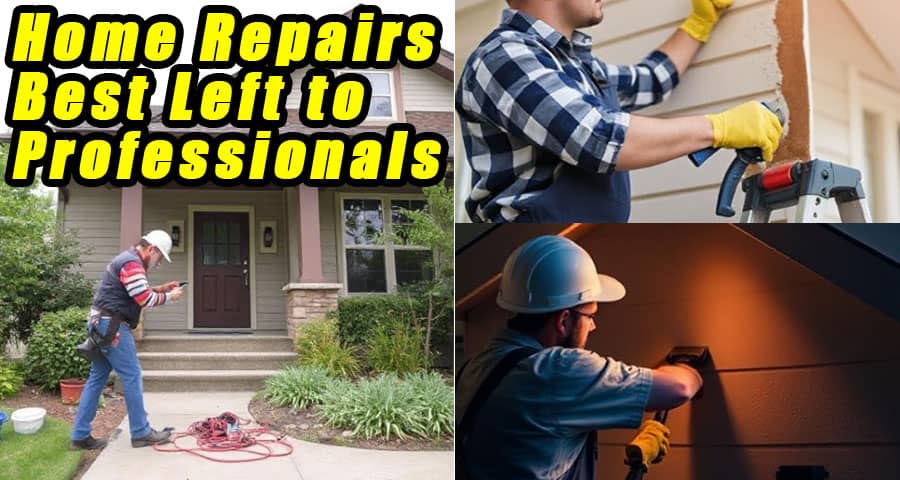7 Home Repairs Best Left to Professionals

Owning a home comes with inevitable maintenance and repairs. While some tasks can be handled by homeowners, others require the expertise of professionals. Attempting complex repairs without the necessary skills can lead to costly mistakes, safety hazards, or even structural damage. Below, we outline seven home repairs that should always be entrusted to professionals.
1. Electrical Work
Handling electricity without proper training is extremely dangerous. A minor mistake can lead to electric shocks, fires, or even fatalities. Professional electricians have the experience to safely upgrade panels, install wiring, and troubleshoot electrical issues. They also ensure that all work complies with local building codes and safety regulations, preventing potential future hazards.
2. Plumbing Repairs and Installations
Plumbing issues can quickly escalate if not handled correctly. Leaks, pipe bursts, and improper installations can result in significant water damage, mold growth, and high repair costs. Certified plumbers have the expertise to detect hidden leaks, repair damaged pipes, replace water heaters, and install complex plumbing systems. They also use specialized tools that guarantee long-lasting repairs.
3. Roof Repairs and Replacements
Climbing onto the roof is dangerous, especially without proper safety equipment and experience. DIY roof repairs can lead to falls, improper installations, and further damage. Roofing professionals understand the structural integrity of roofs, ensuring that repairs and replacements are done correctly. They also identify potential issues such as moisture buildup, weak shingles, and insulation problems, preventing future leaks and costly repairs.
4. Structural Repairs
Any damage to the foundation, walls, or load-bearing structures must be addressed by professionals. Incorrect repairs can compromise the integrity of the home, leading to severe safety risks. Structural engineers and contractors assess the extent of damage and use the right techniques to reinforce weak foundations, repair cracks, and maintain the stability of the home.
5. HVAC System Repairs
Heating, ventilation, and air conditioning (HVAC) systems are intricate and require expert handling. DIY repairs can lead to improper system functioning, increased energy costs, or even carbon monoxide leaks. Certified HVAC technicians can diagnose issues, clean air ducts, repair furnaces, and replace malfunctioning components. They also ensure that systems run efficiently, extending their lifespan and improving air quality in the home.
6. Gas Line Repairs and Installations
Working with gas lines is extremely hazardous. A small mistake can lead to gas leaks, explosions, or carbon monoxide poisoning. Licensed professionals are trained to install, repair, and maintain gas lines safely, adhering to strict safety protocols. They use specialized tools to detect leaks and ensure that all connections are secure, reducing the risk of dangerous accidents.
7. Major Home Renovations
Extensive home remodeling projects involve multiple trades, including electrical work, plumbing, and structural modifications. Without proper knowledge, DIY renovations can lead to permit violations, structural damage, and costly rework. Professional contractors coordinate all aspects of the renovation, ensuring that the work is done according to code and meets safety standards. Their expertise also enhances the overall value and functionality of the home.
Final Thoughts
While DIY home repairs can be tempting, some tasks require professional expertise to ensure safety, efficiency, and long-term reliability. Hiring licensed professionals not only prevents costly mistakes but also enhances the overall value of your home.
Please watch the following short video for Home Repairs Best Left to Professionals
